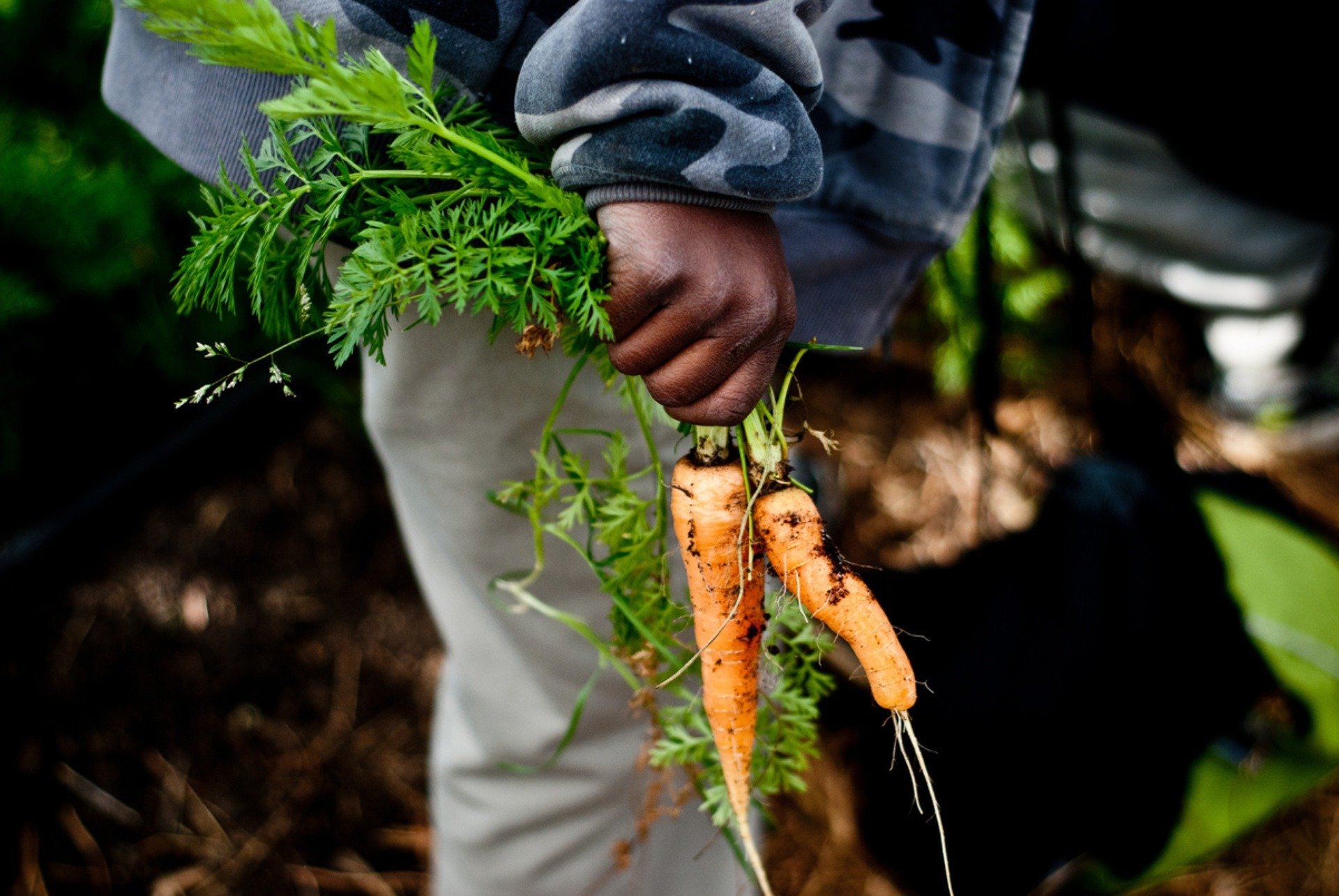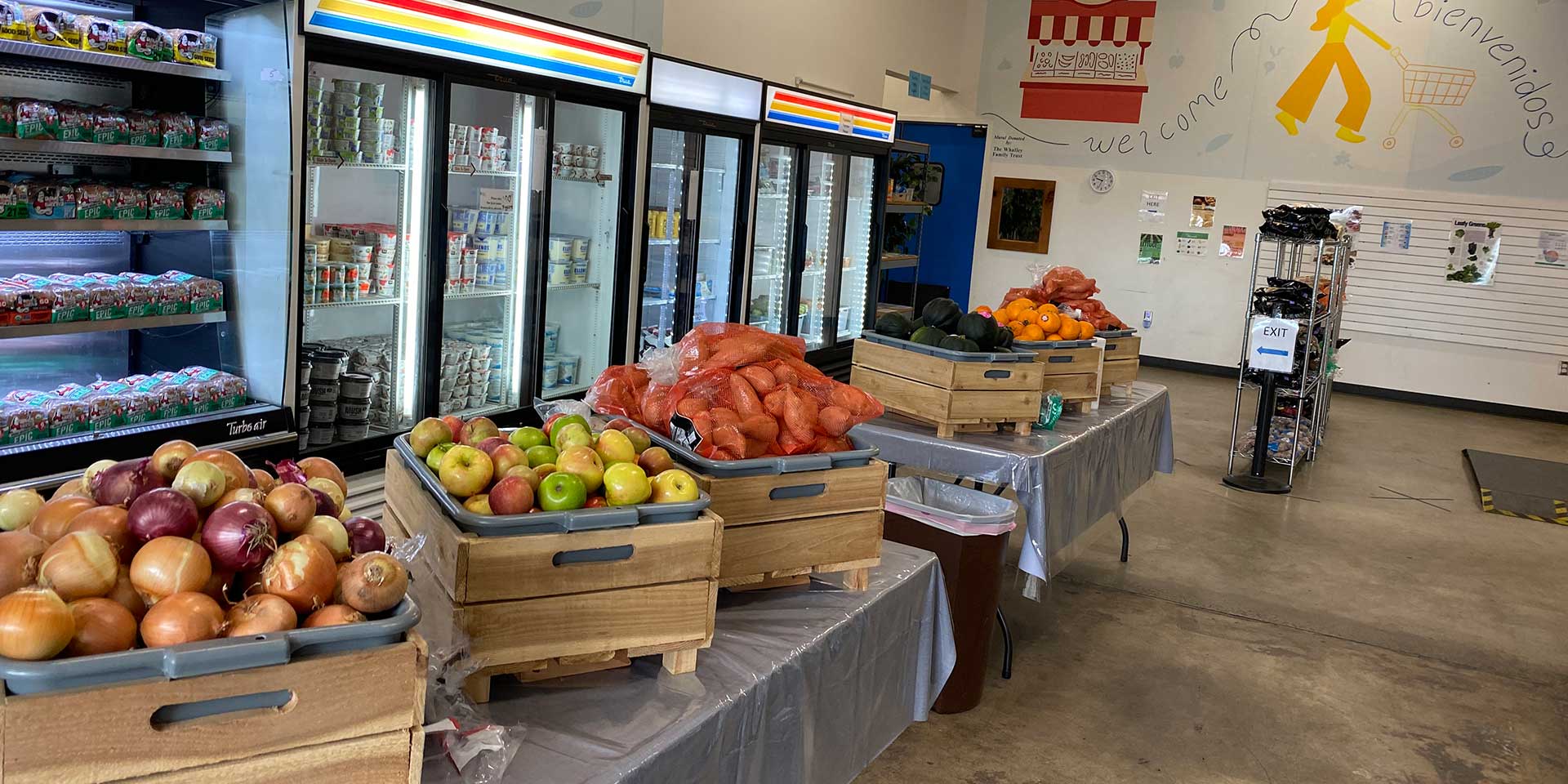How we came to rely on emergency food
Despite being one of the world’s richest countries, the United States is far from immune to hunger. According to Feeding America, 49 million people, or one in six Americans, depended on charitable food assistance programs, including food banks, food pantries and soup kitchens, in 2022 to feed themselves and their families. And while more recent data isn’t as detailed, it’s clear that inflation and wage stagnation have taken a toll, with food insecurity numbers looking worse in 2023 than they did in 2022.
These programs are, in many ways and for many people, essential for meeting the country’s nutritional needs. But could their presence actually reinforce — not mitigate — the root causes of food insecurity? Answering that question requires a closer look at the history of the charitable food system in the United States, how and why it was put in place, and how it’s altered the landscape of food insecurity ever since.
It wasn’t always like this
The food stamp program, which originally distributed surplus food to poverty-stricken families through the form of stamps, was first introduced in the United States in the 1930s as a response to the Great Depression, which economically crippled much of the country, leaving many without reliable access to adequate nutrition. For decades, different versions of this federally-funded program helped feed the nation’s hungry, ensuring that many — if not all — Americans had access to the most basic necessity of all. Food stamps functioned as an entitlement program — not charity.
But Ronald Reagan slashed the food stamp program upon his election to the presidency in 1980. Reagan believed that private, voluntary charity (which, at the time, was uncoordinated and underfunded) and the effects of trickle-down economics could replace the publicly funded programs that so many depended upon until that point. In the shadow of this new mentality arose an emergency food system — a semi-organized network of food banks and pantries — that has since become embedded in the food insecurity landscape, forcing a chronic reliance on so-called “emergency” food.
Mark Winne, author of “Closing the Food Gap,” has witnessed this change over the course of his career as a community food activist. “There was virtually no ‘charitable food system’ when I started my career in the early 1970s,’ he explains. “The… growth of the charitable food system [was] due to a national economic downturn and the conservative, anti-welfare mentality of the Reagan Administration from 1981 to 1989.”
These changes were partially fueled by a “bootstraps” mentality that ignored the sociopolitical contexts of poverty and, by extension, food insecurity. But the fact that the United States has come to rely so heavily on charitable ’emergency’ food instead of providing comprehensive entitlements that help poor people achieve self-sufficiency is, says Winne, largely a result of racist mentalities.
“We’re the only country in the developed world that relies so heavily and exclusively on food assistance as a core part of its anti-poverty, social welfare strategy,” explains Winne. “Rather than simply increase cash assistance without a lot of restrictions on how the recipient can spend the money,” Winne says, “racist assumptions coming from [1980s era] Southern Democrats whose support was critical — Black people can’t be trusted to spend public funds responsibly — the assistance was limited to food purchases only… The racist roots of those attitudes are uniquely American.”
The cultural appeal of charity and its consequences
It turns out that Reagan’s push for greater reliance on the charitable food system was an easy sell, especially for his culturally conservative, religious-leaning base. According to Andy Fisher, author of “Big Hunger: The Unholy Alliance Between Corporate America and Anti-Hunger Groups,” “People see the immorality of hunger as it [is] codified in the Bible and other religious teachings.”
According to Fisher and other critics of the emergency food system, addressing the root causes of poverty and food insecurity is difficult, damning, and requires a critical examination of this country’s history of cultural and political failings. Charity, on the other hand, does not. “Charity is easier than social change,” explains Fisher. “Charity has tangible benefits. It provides great photo-ops. It makes the donors feel good. It doesn’t get into the messiness of politics and policy. It redeems the giver, making them feel good. It’s politically safe, direct, and immediate.”
With the rise of the charitable emergency food system came an infrastructure to support it. “When the entire system started to grow exponentially…” explains Winne, “it was in response to a national crisis of increasing food insecurity… Therefore, ‘food banking’ was arguably a necessity for which there was no reasonable and immediate substitute. But rather than respond to what should have been viewed as a temporary crisis and/or a movement mobilized to demand federal intervention in the form of… very robust food assistance programs and other public policy actions, the charitable food system became institutionalized, a victim of its own success.”
In the wake of the drastic cuts to the social safety net deployed during the Reagan administration, people needed food, and food banks and pantries were largely able to meet that need. But in the immediate push to provide people with sustenance, organizers in many ways ignored the policies that had manufactured that food insecurity in the first place. Charitable food organizers, says Winne, “became entrenched and disinclined to engage in serious public policy work that might address the underlying causes of food insecurity.” Pushing for too much policy change could alienate donors and threaten charitable organization CEO salaries, so calls for a disruption of the status quo were often muffled.
According to Katie Martin, author of “Reinventing Food Banks and Pantries,” many charitable food organizations have specifically declined to advocate for better policies regarding poverty and food insecurity, like addressing overlapping and compounding economic barriers to food security, cutting back on strict eligibility requirements for programs like SNAP and unemployment assistance, and reducing food waste and better distributing wasted food. “Historically, food banks in particular have been very nonpartisan because hunger has been seen as a bipartisan issue,” she explains. “No one likes to see or think about people in their community going hungry and recognize the systems in place, systemic injustices…. Changing those systems, it requires sticking our neck out politically.”
Of course, some food banks and pantries have pushed for greater change while others have opted out. “I think that there are some food banks that have been more comfortable advocating for those bigger issues,” says Martin.
Building a brighter future for charitable food recipients
Experts like Martin, Fisher and Winne say that an understanding of the underlying causes of food insecurity is essential to creating a more just future for charitable food recipients. First, there’s challenging the idea of charity itself. People facing food insecurity are symptoms of a failed system, so facilitating their access to nutrition is simply an attempt to right society’s wrong. Charitable food should serve to benefit the recipient — not to bolster the egos of the donors.
Secondly, there should be a recognition that food insecurity does not occur in a vacuum. At its core, food insecurity is inextricably linked to poverty. “A lack of income drives food insecurity,” says Fisher.
Martin says that it’s important for charitable food leaders and volunteers to view food insecurity within its proper context. “When you have food pantry directors or volunteers who see their services as providing food and food alone and not necessarily recognizing the interconnectedness of food insecurity and other social determinants of health or other root causes of poverty… it’s very easy to see food as the solution as opposed to seeing hunger as just one symptom of a larger problem.”
Building collaboration between food banks and pantries and other types of nonprofits may be the key to better meeting all of the needs of people who are struggling — not just putting tonight’s dinner on the table. The Cleveland Food Bank, the Food Bank of Central and Northeast Missouri, and the Tampa Food Bank are just a few examples of organizations that are already moving in this direction, says Martin. These organizations, among others, are working to connect food bank and pantry patrons with other community services, like job training, affordable childcare, and disability benefits. By co-locating other types of community services, food banks and pantries can become hubs for people who are struggling financially in multiple areas of their lives, as is common amongst the food-insecure.
And thirdly, organizers should recognize that food insecurity, like so many other poverty-adjacent struggles, targets marginalized groups at higher rates. Therefore, people from these marginalized groups should be at the helm of charitable organizations whenever possible. “Women and BIPOC groups have much higher rates of food insecurity than men or whites,” says Fisher. “They have lived experience and unique perspectives that can and should drive the policy agenda, as they represent their own interests.”
Fixing the landscape of the post-Reagan charitable food system in the United States would require work at both the personal and policy levels. But the widespread dissemination of government funds during the height of the COVID pandemic illustrated that policy intervention can make a striking difference in peoples’ lives. “I think a huge lesson from COVID that I don’t want to be overlooked is how the rates of food insecurity actually were stable or in some cases declined during COVID because of the incredible outpouring of federal, state, and local government support,” explains Martin.
And people weren’t able to better access food just because of nutrition-specific policies. Martin says that government intervention in “not just food distributions but also the child tax credit and moratoriums on eviction notices and student loan repayments and reducing red tape for services and programs… [helped] folks to be able to afford enough food” during that time.
Experts in the charitable food sector are implementing other policies to better meet the needs of the food insecure. Winne says he’s seen a greater focus on more nutritious, less-processed foods over the course of his career, and Martin advocates for food bank and pantry models that allow participants to use these facilities more like stores — where autonomy and a pleasant “shopping” experience are prioritized — than dehumanizing food distribution centers.
Absent much-needed policy changes that respond to rising rates of inflation, price-gouging at grocery stores, and stagnating wages, food insecurity will continue to plague American families. Although positive changes are taking place in some corners of the charitable food system, according to experts like Winne and Fisher we are not doing enough to ensure people have the food, shelter, and basic necessities one needs to live a dignified life or to be more than one crisis away from missing their next meal.
Get the latest news from FoodPrint
By subscribing to communications from FoodPrint, you are agreeing to receive emails from us. We promise not to email you too often or sell your information.
Top photo by kuarmungadd/Adobe Stock.
More Reading
Can MAHA succeed at making America healthy again?
November 19, 2025
City-owned grocers may be a lifeline for the food insecure — but they're not the only public model
August 14, 2025
The slow death of the family farm
July 15, 2025
Do organic waste bans and composting programs really take a bite out of food waste?
March 17, 2025
What could massive cuts to SNAP benefits mean for the U.S. economy – and for all of us?
February 20, 2025
The EPA finally acknowledged the risks of PFAS in sewage sludge. What’s next?
February 10, 2025
Is flawed food policy responsible for listeria outbreaks in deli meats?
August 13, 2024
What does USDA’s new nutrition rule mean for school meals?
June 7, 2024
Limits for PFAS in drinking water signal a new phase in federal action on 'forever chemicals'
May 1, 2024



